
|
![]()
Greatest Films of the 1980s
1980 | 1981 | 1982 | 1983 | 1984 | 1985 | 1986 | 1987 | 1988 | 1989
Title Screen Film Genre(s), Title, Year, (Country), Length, Director, Description 


An American Werewolf in London (1981, US/UK), 97 minutes, D: John Landis


Arthur (1981), 117 minutes, D: Steve Gordon
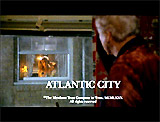



Atlantic City (1981), 104 minutes, D: Louis Malle
French director Louis Malle's tense, unsentimental, evocative and bleak character study was about an aging, has-been, small-time hood and numbers-runner named Lou Pascal (Burt Lancaster at age 68) who lived in the gray, depressing Atlantic City boardwalk area. Threatened to be put out of business by the casinos, he's forced to be the kept man of a miserly and abusive aging beauty queen - a feisty, broken-down gangster's widow named Grace Pinza (Kate Reid). His only source of escape and pleasure is secretively watching his neighbor - a younger, cynical oyster-bar waitress named Sally Matthews (Susan Sarandon), who performs a sexy lemon-wash of herself at her window within his apartment's view. She aspires to become a blackjack dealer/croupier in one of the more glamorous resort casinos in Monte Carlo. Their lives are turned upside-down when Sally's deceitful, estranged husband Dave (Robert Joy) and her eight-months pregnant sister Chrissie (Hollis McLaren) show up on Sally's doorstep to sell a stolen shipment of high-quality cocaine. Lou befriends all three and promises he can sell the drugs due to his connections with the underworld. When Dave gets killed by the former owners of the drugs in the Philadelphia mob, Lou is able to keep the stash to himself as a financial windfall. He finally gets to play the role of his vain dreams as a big-time, respected, confident gangster, however illusory and dangerous, and is able to woo and show lavish generosity toward Sally as her self-appointed protector. After killing two gangland hoods to protect her, he admits his life was exaggerated up until then: "I never killed anybody in my life...But I did tonight", and he gleefully watches the report of the murders on the TV news: "Hey, that's me!...This story is going to be big all over the country: 'Gangland slaying rips apart Atlantic City!'" In the final sequence, Lou makes a final promenade down the Boardwalk with Grace - with a panning shot up to a view of a wrecker's ball smashing into an apartment before the closing credits.

Blow Out (1981), 107 minutes, D: Brian De Palma




Body Heat (1981), 113 minutes, D: Lawrence Kasdan
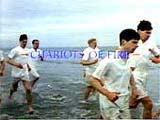


Chariots of Fire (1981, UK), 123 minutes, D: Hugh Hudson


Christiane F. (1981, W.Germ.) (aka Wir Kinder vom Bahnhof Zoo), 138 minutes, D: Uli Edel
Uli Edel's bleak and notorious coming-of-age film was based on an autobiographical 1979 memoir sub-titled Wir Kinder vom Bahnhof Zoo (We Children from Bahnhof Zoo). The story, set in late 1970s West Berlin, was about a real-life drug-addicted young teen prostitute named Christiane F. (Natja Brunckhorst). The film-makers made extensive use of the actual locations mentioned in the book, including her home district of Gropiusstadt - a working class neighborhood or borough in southeastern Berlin that consisted mainly of social housing (drab, high-rise concrete apartments). She became hooked on heroin by her 14th birthday and began turning tricks and getting high at Bahnhof Zoo, West Berlin's then-largest train and subway station. Other locales included the city's modern "Sound" Diskothek where Night of the Living Dead (1968) was projected to teens, Berlin's seedy public toilets, and the roof of the Europa-Center (with a revolving neon-blue Mercedes-Benz sign). The cool tone of the film was reinforced by a David Bowie soundtrack (and midway through a live Bowie concert in a nightclub).


Das Boot (1981, W. Germ.) (aka The Boat), 145 minutes, D: Wolfgang Petersen
German director Wolfgang Petersen's sympathetic and realistic, expensively-made anti-war film was faithfully adapted from the 1973 autobiographical book by war correspondent Lothar-Guenther Buchheim. The epic followed the heroic efforts of war-weary German U-boat captain (Jurgen Prochnow), known as Der Alte ("the Old Man"), and his desperate crew during WWII as they patrolled the North Atlantic and Mediterranean. They were confined and crowded in the claustrophobic, grimy, cramped insides of their U-96 undersea vessel, while being attacked from above. The harrowing and tense film included scenes of depth charge attacks, rivets popping during a deep dive maneuver, hull breaches that let in water, terror during an attempt to raise the damaged ship, and threats of asphyxiation and starvation.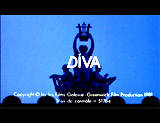
Diva (1981, Fr.), 117 minutes, D: Jean-Jacques Beineix
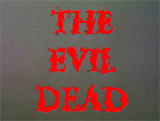


The Evil Dead (1981), 85 minutes, D: Sam Raimi
Writer/director Sam Raimi's debut film was the ultimate "cabin in the woods" story about demonic forces in the woods (not really reanimated dead zombies). The hyper-kinetic film had very little dialogue, plot and character development, but incredible POV tracking shots. Followed by two sequels: Evil Dead II (1987), and Army of Darkness (1992). Five Michigan State University students in their 20s, who were spending a weekend retreat in a rented, remote cabin in the Michigan mountains, inadvertently unleashed (or raised from the dead) dormant, demonic evil spirits from the ominous surrounding forest. With the discovery of a tape recording of potent incantations left by a professor who once lived there, and an accidental recitation of spells from a mysterious ancient Sumerian Book of the Dead known as the Necronomicon - they called up murderous spirits. After being raped by tree branches in a horrific scene, Cheryl (Ellen Sandweiss) was transformed into a demon zombie (known as a Deadite or Shemp) with a greyish white face and superhuman strength. The next to be possessed was Ash William's (B movie icon Bruce Campbell) sister Shelly (Sarah York). Scotty (Hal Delrich) died from massive injuries inflicted by trees when he tried to walk out of the area, while the next victim was Ash's girlfriend Linda (Betsy Baker). Cheryl (who had escaped from the cellar) continued to attack Ash as well as a zombified Scotty, whose eyeballs had to be gouged out. Only Ash escaped being violently possessed by 'evil dead' forces by film's end.



The French Lieutenant's Woman (1981, UK), 124 minutes, D: Karel Reisz


Gallipoli (1981, Australia), 110 minutes, D: Peter Weir




Gregory's Girl (1981, UK), 91 minutes, D: Bill Forsyth



Mad Max 2 (1981, Australia) (aka The Road Warrior (1982)), 94 minutes, D: George Miller
Writer/director George Miller's imaginative, post-apocalyptic action sci-fi (western) film about a burned-out, ex-cop named "Mad" Max (Mel Gibson in a star-making role) (his last name from the first film in the trilogy, Rockatansky, is never uttered). In this comic book-styled B-film, the road warrior wanders the barren, lawless highways of an Australian outback wasteland in his black super-charged Interceptor along with his Australian cattle dog. Living only to survive while dealing with anarchic crazies and violent road gangs, his main mission in life is to acquire enough precious petrol to keep nomadic. He agrees to help save a besieged, oil-producing colony (established as a small fuel depot at a refinery) from a crazed, marauding wasteland warlord, the evil Humungus (Kjell Nilsson), by promising to help the refugee community of survivors with a rush for freedom in a Mack truck (pulling a fuel tanker) in exchange for gas. The entire film has the same formula as Shane (1953), The Magnificent Seven (1960) or a Sergio Leone 'spaghetti western', with Gibson providing the Clint Eastwood "Man With No Name" legendary hero - or anti-hero role. This film is best known for its non-stop car action and amazing stuntwork in its dazzling climax, as well as its stark, naturalistic depiction of a post-apocalyptic future that nearly every film has imitated ever since. This sequel film, superior to the original film - an even darker revenge film Mad Max (1979), was followed by a nuclear post-apocalyptic sequel, Mad Max Beyond Thunderdome (1985), memorably featuring a co-starring role by rock star Tina Turner.

Mephisto (1981, Hungary), 144 minutes, D: István Szabó


My Dinner with Andre (1981), 110 minutes, D: Louis Malle



On Golden Pond (1981), 109 minutes, D: Mark Rydell


Pixote (1981, Brazil) (aka Pixote: A Lei Do Mais Fraco, or Survival of the Weakest), 128 minutes, D: Hector Babenco
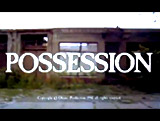

Possession (1981, Fr./W.Germ.), 124 minutes, D: Andrzej Zulawski
Director Andrzej Zulawski's experimental and avant-garde work was an unusual hybrid - a surrealistic and bizarre occult horror film and a domestic marital drama with doppelgangers. Much of the film was deliberately shot in the early 1980s during the tense Cold War, right along the Berlin Wall in the Kreuzberg section of West Berlin. It was a perfect allegorical reminder of the time when the entrapping Wall, close to the evil Communist world, still split and scarred the land and its people. The symbolically-told story was about tormented young French femme Anna (Isabelle Adjani) engaged in a self-destructive, disintegrating marriage to husband Mark (Sam Neill). The alienated rival spouses shared an apartment in East Berlin within view of the Wall and were slowly driving each other apart. Finding herself in a tortuous love triangle, Anna's tortured id created a supernatural, wormy-tentacled, lizardy, monstrous creature. She kept it as her 'secret lover' for sexual fulfillment in a second sparse and rundown Kreuzberg apartment. In the film's most famous sequence, Anna experienced a five-minute hysterically-screaming, miscarriage-birthing flashback sequence in a deserted, echoing Berlin U-Bahn subway station tunnel in which she writhed, convulsed and tossed her bag of groceries against the wall.

Ragtime (1981), 155 minutes, D: Milos Forman
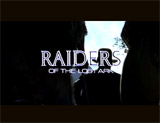


Raiders of the Lost Ark (1981), 115 minutes, D: Steven Spielberg
Spielberg's thrilling, entertaining homage to 1930's cliff-hanging adventure serials/films at Saturday matinees. One of the greatest action films ever made - led to a trilogy. Mid-1930s, pre-WWII comic-bookish, globe-trotting, bull-whip toting adventurer/archaeologist Dr. Indiana Jones (Harrison Ford) searches for rare antiquities. The film's opening sequence is a white-knuckled experience in a South American rainforest and cave with poisonous darts and a threatening boulder. In a race with the Nazis, dashing Dr. Jones is enlisted to locate the Biblical Ark of the Covenant before the evil agents of Hitler use its powers to win the war. From Nepal to Cairo, the self-effacing hero is aided by tough, hard-drinking, spunky and feisty ex-girlfriend Marion Ravenwood (Karen Allen), as he escapes one life-threatening situation, fight, scrape, and chase after another - especially venomous snakes and the mysterious wrath of God in its finale. Followed by three sequels: Indiana Jones and the Temple of Doom (1984), Indiana Jones and the Last Crusade (1989), and Indiana Jones and the Kingdom of the Crystal Skull (2008).



Reds (1981), 200 minutes, D: Warren Beatty
The sprawling and overly-ambitious political biopic was an ill-fated, sweeping, and tumultuous love story between American journalist-activist John "Jack" Reed (Warren Beatty, the producer/director/co-writer), a naive yet charming radical revolutionary, and strong-willed aspiring writer-photographer Louise Bryant (Diane Keaton with a Best Actress nomination). She abandoned her dull dentist husband and middle-class, provincial life and followed the idealistic Reed and other leftist bohemians and free-thinking members of the intelligentsia to Greenwich Village and Provincetown. As a feminist and advocate of free love, she had an intense romance with Reed (involving many spats, partings and reuniting make-ups, due to their frequent separations). The assertive Louise became frustrated and self-angry at being underappreciated and marginal to Reed's heroics and fame, and she made efforts to strike out and establish her own identity. In a side-plot, Louise engaged in a brief, but tumultuous summer affair with playwright Eugene O'Neill (Jack Nicholson) - in the love triangle, he served as a rival for Louise's affection. O'Neill glibly provided a 'devil's advocate' counterpoint to the romantically-idealistic viewpoints of revolutionaries Louise and Reed. She secretly married Reed, and then sparks flew when they worked together in Russia during the Bolshevik Revolution and Reed wrote Ten Days That Shook the World, but soured once their lives as writer-colleagues ended. She was loyally propelled back into the arms of Reed at the Moscow train-station - the film's finale, but he was soon on his death-bed.

Whose Life Is It Anyway? (1981), 119 minutes, D: John Badham
This provocative film asked the question: Does a patient have the right to choose to die? 32 year-old gifted sculptor and art teacher Ken Harrison (Richard Dreyfuss) suffered horrible injuries following a car crash - a severed spinal cord. After six months, it was determined that he was paraplegic and paralyzed from the neck down. On a life-support machine in ICU with cameras monitoring him, he came to the conclusion that he wanted to die, if he could only get the hospital to discharge him. He told his dedicated girlfriend/dancer Pat (Janet Eilber) that he was terminating their relationship - and that he wanted her to regard him as dead ("I don't want to go on living like this"). Nonetheless, he kept an acerbic sense of humor, but mostly with one-liners about his 'vegetable' condition and his sexual impotence. The strict and stubborn Chief of Medicine Dr. Michael Emerson (John Cassavetes) was opposed to Harrison's wish to die, judged him to be too clinically depressed (and therefore incompetent) to make a logical decision, and injected him with Valium (against his wishes) to keep him comfortable and less anxious. Another physician Dr. Clare Scott (Christine Lahti) eventually came to be sympathetic and agree with Harrison that he had a right to decide his own fate. He was also supported by free-spirited, black orderly John (Thomas Carter) with a love of reggae music, and pretty young novice nurse Mary Jo Sadler (Kaki Hunter). The embittered Harrison hired personal injury lawyer Carter Hill (Bob Balaban) to represent him in a right-to-die case. He wanted a final ruling on whether he could legally be forced (or not) to stay in the hospital for treatment. The judge in the case, which was held in a hospital office, was Judge Wyler (Kenneth McMillan). The hospital countered Harrison's wishes by threatening to order him involuntarily committed (under the Mental Hygiene Law) to remain in the hospital. Harrison's lawyer argued that he was being held without his consent, by bringing a pre-emptive action against the hospital with a writ of habeas corpus. The hospital's psychiatrist Dr. Jacobs (George Wyner) agreed with Dr. Emerson's adversarial position. Harrison defended his right to die in an eloquent speech, by claiming that he was completely helpless and imprisoned inside an already dead body. The Judge finally decided that Harrison could remain at the hospital, but remove his life-support and dialysis, meaning that he would die within a few weeks.

Zoot Suit (1981), 103 minutes, D: Luis Valdez